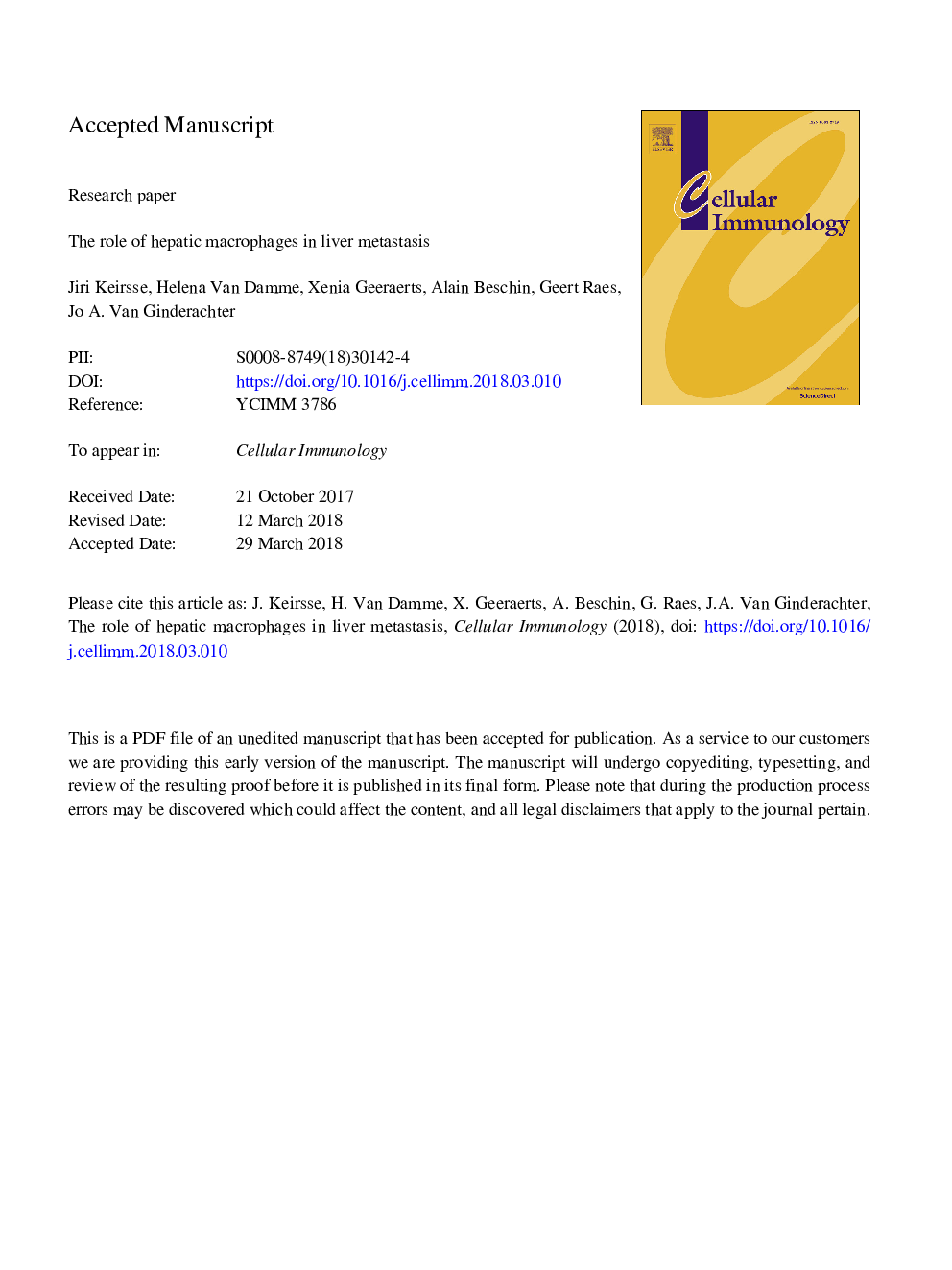| Article ID | Journal | Published Year | Pages | File Type |
|---|---|---|---|---|
| 8943878 | Cellular Immunology | 2018 | 38 Pages |
Abstract
In this Review, we highlight the most remarkable findings regarding the origin and functions of hepatic macrophage populations, and we provide a detailed description of their distinct roles in the different phases of the liver metastatic process.
Keywords
ECMCCLGM-CSFTGFTLRAPCCC-chemokine ligandICAMVCAMCXCLMo-DCM-CSFRHGFmAbEGFRCTCMMPTNFEGFnatural killerCeALSECROSPancreatic ductal adenocarcinomaPDAC یا pancreatic ductal adenocarcinomaMonoclonal antibodycarcinoembryonic antigenTeminterferonIFNinterleukintransforming growth factorToll-like receptorColorectal cancerliver sinusoidal endothelial cellCirculating tumour cellDendritic cellHepatic stellate cellKupffer cellMonocyte-derived dendritic cellantigen presenting cellMIFHepatocyte growth factorMacrophage migration inhibitory factortumour necrosis factorgranulocyte-macrophage colony-stimulating factorEndothelial growth factorVascular endothelial growth factorVascular Endothelial Growth Factor (VEGF)chemokine (C-X-C motif) ligand Extracellular matrixMonocyte-derived macrophageHepatic macrophageLiver metastasisHepatic metastasisMetalloproteinaseMHCmajor histocompatibility complexbone marrowtransendothelial migrationintercellular adhesion moleculevascular cell adhesion moleculeNitric oxideCRCYolk sacReactive oxygen speciesEpidermal growth factor receptorMacrophage colony-stimulating factor receptor
Related Topics
Life Sciences
Biochemistry, Genetics and Molecular Biology
Cell Biology
Authors
Jiri Keirsse, Helena Van Damme, Xenia Geeraerts, Alain Beschin, Geert Raes, Jo A. Van Ginderachter,
